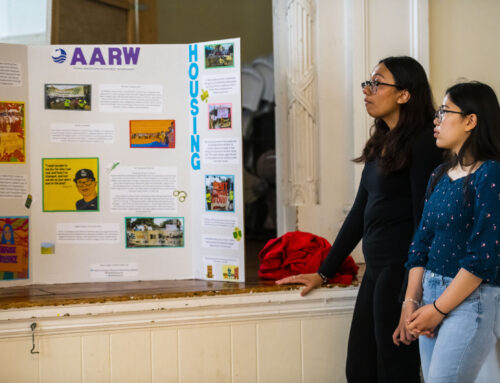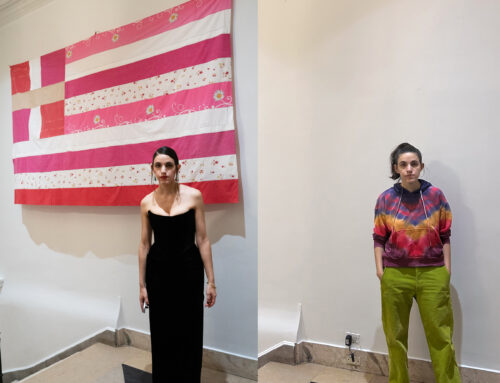One hundred years since the 1920 passage of the 19th Amendment, allowing no American to be denied the vote on account of sex, we continue to recognize it as an important milestone and major turning point for the women’s rights movement in America. Perhaps it is even one of the most significant achievements for women in American history.
The women’s suffrage movement began in 1848 when a woman’s rights convention was held in Seneca Falls, New York. It was at this meeting where women signed a Declaration of Sentiments that declared men and women equal and that women were autonomous individuals with their own political identities. Thus, one of their first and primary goals was for women to gain voting rights.
Elizabeth Cady Stanton and Susan B. Anthony are recognized as the leaders of the female suffragists, who founded an organization called the National Woman Suffrage Association through which they would give speeches around the country to advocate for a woman’s right to vote. Meanwhile, suffragist Alice Paul formed a group called the National Women’s Party that would focus on more radical tactics such as hunger strikes and White House pickets.

Ultimately, the 19th Amendment to the Constitution was ratified on August 18, 1920, whose passage is largely credited to the aforementioned women and organizations.
The tale of the journey from Seneca Falls ending with women’s suffrage is one recognized even by elementary school students. Presented in most American history textbooks are the stories of Elizabeth Cady Stanton and Susan B. Anthony. Women’s suffrage is even commonly portrayed in modern pop culture. In 1999, documentarist Ken Berns created a documentary called Not For Ourselves Alone: The Story of Elizabeth Cady Stanton and Susan B. Anthony to commemorate their role in fighting for voting rights for American women. In 2004, film Iron Jawed Angels focused on highlighting activist Alice Paul and her work in leading the National Women’s Party in holding White House protests and even more radical actions such as a hunger strike. The same narrative highlighting the same few women and their linear timeline of the 1848 Seneca Falls Convention through the 1920 19th Amendment passage has been ingrained into American history and culture.
However, the suffragists gathered at Seneca Fall were mostly middle and upper-class white women, with a few white male supporters, and a singular African American male—Frederick Douglass. No Black women or women of color attended the convention. Thus, this began the singular history of women’s suffrage—one that is exclusive and white-washed.
Although women such as Stanton and Anthony should be recognized for their work in progressing women’s rights in America, their responsibility in progressing feminism and women’s rights is overinflated, especially in light of the actions they took to get there.
The fight for the female vote was strictly gender-based. Stanton and Anthony, made it so much about gender that they in fact stepped on the backs of women and people of color to promote their agenda. Stanton publicly expressed bigoted views of African-American men, declaring it completely backwards to allow black men to vote, vis-á-vis the 15th Amendment, before white women could. Suffrage movements and organizations were also highly discriminatory. Black women were not allowed to join many national suffragist organizations and clubs such as those led by Paul, Stanton and Anthony. A notable example of this segregation was in 1913 when organizers of a huge suffragist parade in Washington demanded that black participants march in an all-black section at the back of the parade. The strategy these mainstream suffragist groups took was not one of gender equality, but one that played into their preexisting gender and racial roles. They argued that they should be permitted to vote as mothers and housekeepers, leveraging their roles as domestic workers. In fact, they even declared that having a demographic of white women voters could help serve as a barricade to the black and immigrant male electorate.

Although often overlooked and overshadowed in the women’s suffrage movement, African American women were important advocates who helped make significant advancements in the movement. The suffrage movement began much earlier than 1848, when Black women such as Sojourner Truth, Harriet Tubman, and Maria W. Stewart, worked side-by-side with white women to progress the movement. By the late nineteenth century, the suffrage movement became fractured by race due to the tension in race relations following the Civil War, over issues such as the Fifteenth Amendment. Nevertheless, Black women formed their own organizations to protect and secure the voting rights for all people.
Following their exclusion from the 1848 Seneca Falls Convention, Black women suffragists spoke at women’s rights gatherings. Sojourner Truth delivered her famous “Ain’t I A Woman” speech at a women’s rights convention in Ohio, declaring that she had as many rights as Black men and white women. Black women became active in the American Equal Rights Organization and the American Woman Suffrage Association which were organizations that supported both Black suffrage and women’s suffrage. Women such as Mary Ann Shadd Cary urged the National Woman Suffrage Association to place the names of 94 Black woman suffragists on their Declaration of the Rights of the Women of the United States. She later formed the Colored Woman’s Franchise Association in Washington, D.C.
By the last decade of the 19th century, more Black women formed local and regional woman suffrage clubs. In 1896, the National Association of Colored Women was formed, under the presidency of Mary Church Terrell. This national organization provided Black women with a platform to advocate for women’s rights and a women’s suffrage that didn’t exclude or use the discrimination of race to progress its cause. The opposition African American women faced was the subject of NACW and NAACP leader Mary B. Talbert’s 1915 Crisis article, “Women and Colored Women.” Talbert declared the importance of understanding the inextricable relationship between race and gender: “With us as colored women, this struggle becomes two-fold, first, because we are women and second, because we are colored women.”

She defied demands that black women march in the back of the 1913 suffrage parade.

She challenged Susan B. Anthony and Elizabeth Cady Stanton at an 1866 women’s rights meeting.

She led voter registration drives after women gained the vote in 1920.
Native American women also greatly influenced the suffragist movement. The starting point of the movement did not begin with the white female activists, but with indigenous women. Indigenous women have held a political voice in their tribes and nations for hundreds of years before white settlers arrived. It is these women who inspired white women to likewise want to hold the same political power and respect in society. Lucretia Mott, known as one of the leading women to launch the suffragist movement, spent the summer in 1848 with the Seneca Nation, a Native American nation, whose practices of female power greatly influenced Mott’s activism.

Marie Louise Bottineau Baldwin is a Native American rights activist who also played a role in the suffragist movement. As she became involved in the suffrage movement and the Society for American Indians, Baldwin began to promote the value of traditional cultures while asserting the place of Indian women in the modern world. She was involved in advocating and celebrating Native Identity in American society and educated people about the traditional political roles of women in Native society.

In the Chinese community, Dr. Mabel Ping-Hua Lee was a suffragist who helped mobilize her community to support the female vote. In 1912, Lee led a parade in NYC to advocate for women’s voting rights. She also wrote many feminist essays for The Chinese Students’ Monthly in which she would argue for women’s suffrage as an important part of a successful democracy and urged the Chinese community to promote women’s civic participation.

The ultimate passage of the 19th amendment was not as groundbreaking of an achievement as it may seem. Before 1920, 15 states, mainly in the West, already had full female suffrage, while others had granted women partial voting rights. The amendment only declared that states could not discriminate in voting based on sex, resulting in the continued barring of millions of women of color from the polls. Most African-American women in the South, like African-American men, were blocked by racial barriers such as poll taxes and literacy tests. For white women, the fight was over, but both Black women and men had not yet achieved suffrage and equal rights. Black women suffragists continued their fight to secure voting privileges, for both men and women. It would take Black women another 50 years before the black community was fully enfranchised through the Voting Rights Act of 1965. Meanwhile, Native Americans and Asian immigrants were excluded from citizenship entirely. It was only in 1947 that legal barriers to Native American voting were removed and in 1952 that people with Asian ancestry could become citizens and vote through the McCarran-Walter Act.
Although the suffragists may have fought for and helped achieve the right for American citizens to vote, the vote continues not to be guaranteed amongst all Americans. Voter suppression efforts across the country have been on the rise. Since 2010, 25 states have enacted new voting restrictions, including strict photo ID requirements and registration restrictions. Other rules include shortened polling hours, cutting the number of polling places in districts, and changing up the geographic voting lines. These rules and restrictions are disproportionately affecting low-income communities and minority groups such as transgender people, people of color, and women.

With many provisions of the 1965 Voting Rights Act having been struck down in 2013, people of color are once again facing increased barriers to the vote. Nevertheless, women of color have been influencing policy and strategies and leading the movement against voter suppression. For example, Margaret Fung is the co-founder and executive director of the Asian American Legal Defense and Education Fund and works to deconstruct voting barriers within the Asian American community. DeJuana Thompson is the founder of Woke Vote, an organization that engages and mobilizes young African American voters in Alabama. Andrea Mercado is the director of the New Florida Majority, an organization led primarily by women of color that has been campaigning for progressive policies and working to overturn the legacy of Jim Crow laws in Florida.
The exclusionary foundations of feminism in America reveal the importance of seeing inequality using the framework of intersectionality: the concept that people are members of marginalized groups which affects their experiences and treatment more than just on a gender-based level. We must acknowledge the reality of the history of American feminism, which often presents itself as a whitewashed, romanticized vision of female empowerment and buries the marginalized communities that have been used as stepping stones to achieve such “empowerment”. History cannot simply rest as a linear remembrance: we must resurrect the many voices and relationships that it takes to build society. Because it is only from the acknowledgement of many voices can we support those voices and work out the knots that have hurt them for so long.




